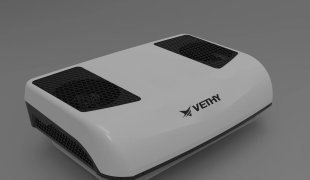The Heart of the Beast: Optimizing Radiator Performance for Racing
April 22, 2024
**The Heart of the Beast: Optimizing Radiator Performance for Racing**
In the high-octane world of racing, every component plays a crucial role in determining the outcome. Among these components, the radiator stands as the unsung hero, silently working behind the scenes to ensure optimal engine performance and prevent catastrophic failures. This comprehensive article delves into the intricacies of radiator design, optimization, and maintenance, providing a roadmap to unlocking the full potential of this vital racing component.
** The Heart of the Beast: Unveiling the Importance of Radiators in Racing
**
Radiators are the unsung heroes of racing, responsible for dissipating excess heat generated by the engine. Without efficient heat management, engines would quickly overheat, leading to reduced power output, increased wear and tear, and potential catastrophic failures. Radiators play a pivotal role in maintaining optimal engine temperatures, ensuring consistent performance and longevity.
** Understanding the Role of Radiators in Heat Management
**
Internal combustion engines generate immense heat as a byproduct of fuel combustion. This heat must be effectively dissipated to prevent engine damage and maintain optimal performance. Radiators function as heat exchangers, transferring heat from the engine coolant to the surrounding air. The coolant, typically a water-based mixture, absorbs heat from the engine and circulates through the radiator, where it is cooled by the airflow.
** The Science Behind Radiator Design: Maximizing Heat Transfer
**
Radiator design is a complex science aimed at maximizing heat transfer efficiency. The core of a radiator consists of a network of tubes or channels through which the coolant flows. These tubes are surrounded by fins, which increase the surface area for heat dissipation. The fins are typically made of aluminum or copper, materials with excellent thermal conductivity.
The effectiveness of a radiator is determined by several factors, including the number and size of tubes, the surface area of the fins, and the airflow rate. A larger radiator with more tubes and fins will provide greater heat dissipation capacity. Additionally, increasing the airflow rate over the radiator enhances heat transfer by carrying away more heat.
** Choosing the Right Radiator for Your Racing Needs
**
Selecting the appropriate radiator for your racing application is crucial. Factors to consider include the engine's heat output, the vehicle's cooling system capacity, and the available space for radiator installation. Oversized radiators may provide excessive cooling, leading to overcooling and reduced engine efficiency. Conversely, undersized radiators may be unable to handle the heat load, resulting in overheating and potential engine damage.
** Optimizing Radiator Placement for Maximum Cooling
**
Proper radiator placement is essential for maximizing cooling efficiency. The radiator should be positioned in an area with ample airflow, such as the front of the vehicle or behind the front grille. Avoid mounting the radiator in areas with restricted airflow, such as behind the engine or in enclosed compartments.
** Enhancing Radiator Performance with Airflow Management
**
Airflow management plays a vital role in radiator performance. Ensuring unobstructed airflow over the radiator is crucial. This can be achieved through the use of air ducts, fans, and shrouds. Air ducts direct airflow towards the radiator, while fans increase the airflow rate. Shrouds prevent airflow from bypassing the radiator, ensuring that all of the airflow is utilized for heat dissipation.
** The Importance of Radiator Maintenance for Peak Efficiency
**
Regular radiator maintenance is essential for maintaining optimal cooling performance. Over time, radiators can accumulate dirt, debris, and insects, which can obstruct airflow and reduce heat transfer efficiency. Periodic cleaning of the radiator, both internally and externally, is recommended to remove any accumulated contaminants.
** Troubleshooting Common Radiator Issues in Racing
**
Radiators can occasionally experience issues that can affect their performance. Common problems include leaks, blockages, and corrosion. Leaks can occur due to damage to the radiator core or hoses. Blockages can be caused by debris or scale buildup within the radiator tubes. Corrosion can weaken the radiator and lead to leaks or reduced heat transfer efficiency.
** Advanced Radiator Technologies for Enhanced Cooling
**
Recent advancements in radiator technology have introduced innovative solutions for enhanced cooling. These include high-performance core designs, lightweight materials, and integrated cooling systems. High-performance core designs optimize heat transfer by increasing the surface area and airflow through the radiator. Lightweight materials, such as aluminum and carbon fiber, reduce the weight of the radiator without compromising cooling efficiency. Integrated cooling systems combine the radiator with other cooling components, such as fans and pumps, to create a compact and efficient cooling package.
** The Future of Radiator Design in Racing
**
The future of radiator design in racing holds exciting possibilities. Ongoing research and development efforts are focused on developing even more efficient and compact radiators. Advanced materials, such as graphene and nanomaterials, are being explored for their potential to enhance heat transfer and reduce weight. Additionally, the integration of active cooling systems, such as variable-speed fans and electronically controlled coolant flow, is expected to further optimize radiator performance.
** Case Studies: Real-World Examples of Radiator Optimization
**
Numerous real-world examples demonstrate the significant impact of radiator optimization on racing performance. In Formula 1, teams have invested heavily in developing high-performance radiators that can handle the extreme heat generated by their powerful engines. These radiators feature advanced core designs, lightweight materials, and integrated cooling systems, enabling the engines to operate at optimal temperatures even under the most demanding conditions.
In endurance racing, such as the 24 Hours of Le Mans, radiators play a critical role in maintaining engine reliability over long distances. Teams employ large-capacity radiators with efficient airflow management systems to ensure that the engines can withstand the grueling conditions of the race.
** Conclusion: The Heart of the Beast - A Vital Component for Racing Success
**
The radiator, often overlooked in the spotlight of racing, is an indispensable component that plays a pivotal role in ensuring engine performance and reliability. By understanding the science behind radiator design, optimizing radiator placement and airflow management, and performing regular maintenance, teams can unlock the full potential of this vital racing component. As technology continues to advance, the future of radiator design promises even greater cooling efficiency and innovation, further enhancing the performance and success of racing vehicles.









